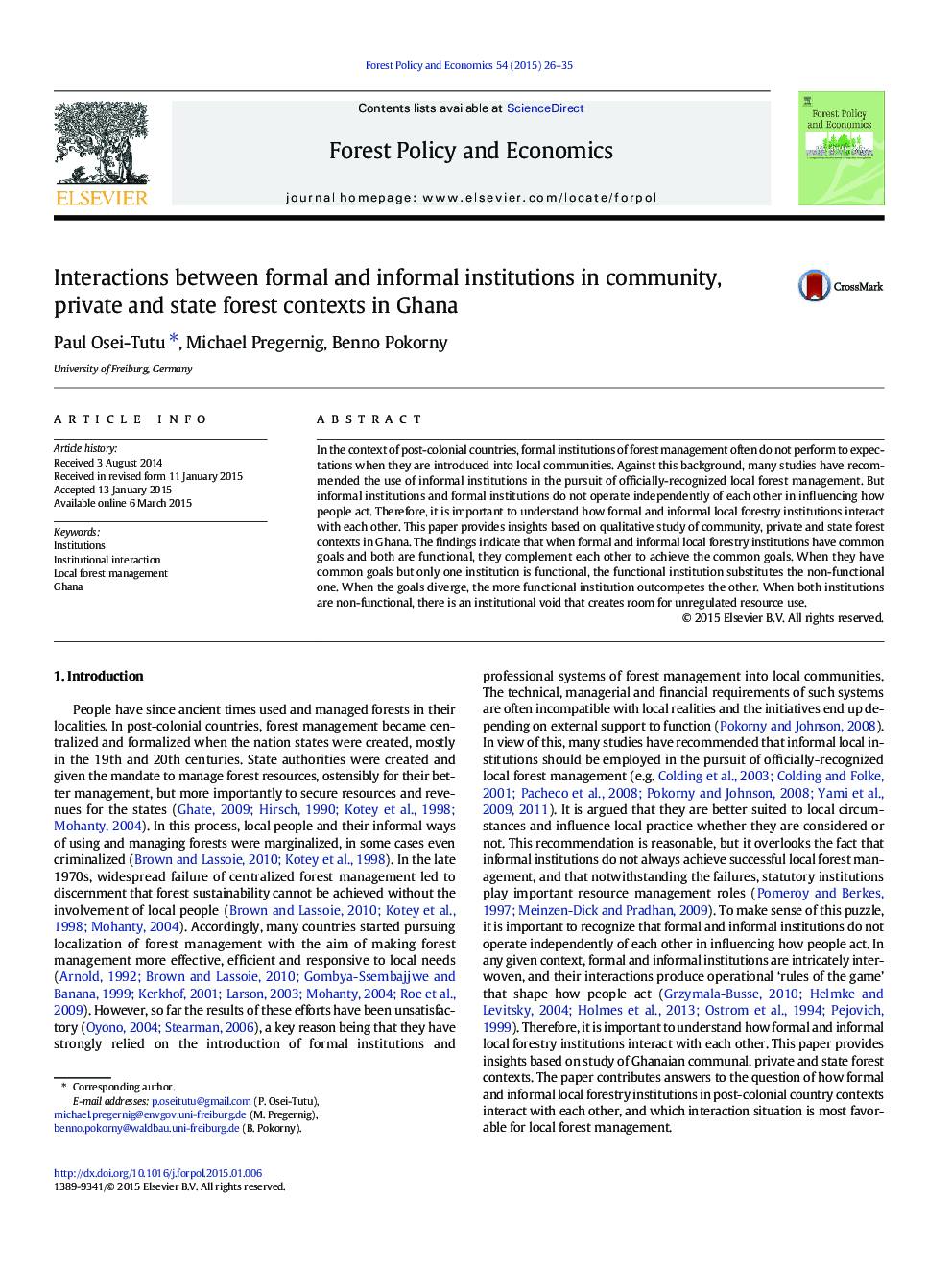| Article ID | Journal | Published Year | Pages | File Type |
|---|---|---|---|---|
| 91193 | Forest Policy and Economics | 2015 | 10 Pages |
•Formal and informal local forestry institutions concurrently influence resource use practice.•When they have same goals and both are functional, formal and informal local forestry institutions complement each other.•Less functional local forestry institutions get replaced by more functional ones.
In the context of post-colonial countries, formal institutions of forest management often do not perform to expectations when they are introduced into local communities. Against this background, many studies have recommended the use of informal institutions in the pursuit of officially-recognized local forest management. But informal institutions and formal institutions do not operate independently of each other in influencing how people act. Therefore, it is important to understand how formal and informal local forestry institutions interact with each other. This paper provides insights based on qualitative study of community, private and state forest contexts in Ghana. The findings indicate that when formal and informal local forestry institutions have common goals and both are functional, they complement each other to achieve the common goals. When they have common goals but only one institution is functional, the functional institution substitutes the non-functional one. When the goals diverge, the more functional institution outcompetes the other. When both institutions are non-functional, there is an institutional void that creates room for unregulated resource use.
